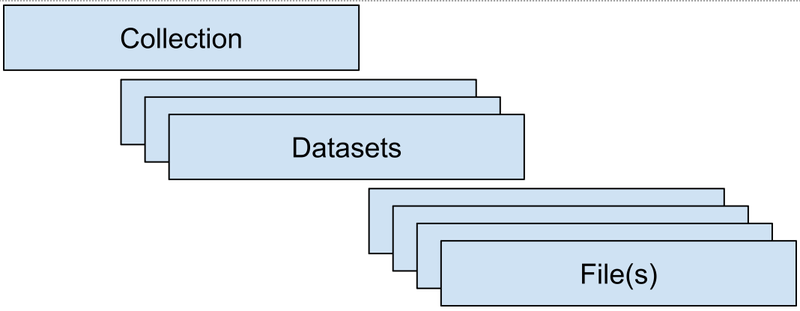About EDRN Cancer Biomarkers Data Commons (LabCAS)
LabCAS is a platform for building a data commons.
The Early Detection Research Network (EDRN) Cancer Biomarker Data Commons (LabCAS) is a data commons designed to support the research community in the discovery and validation of cancer biomarkers. LabCAS serves as a comprehensive platform for the storage, management, and dissemination of a wide array of cancer biomarker-related data captured from EDRN studies.
LabCAS provides the following:
- Support for Data Delivery: Facilitate data submission from EDRN sites.
- Metadata and Data Capture: Collect metadata and data systematically.
- Integration with Existing Repositories:Catalog data in EDRN LabCAS by linking metadata to data stored in existing NIH- and NCI-supported repositories that promote FAIR principles.
- Compliance with EDRN Data Sharing Policy: Ensure data capture aligns with the policy.
- Secure Data Sharing: Enable safe data sharing between EDRN sites.
- Linking Data to Publications: Use persistent identifiers (DOIs) to connect data with publications.
- Simplified Data Citation: Make locating, accessing, and citing original resources easy to ensure proper credit.
- Secure and Reliable Data Management: Capture, process, manage, search, and analyze scientific data securely.
- Analytical Methods Integration: Plug in various analytical methods.
- Repeatable Data Processing Pipelines: Implement consistent data processing workflows.
- Visualization and Analytical Tools: Integrate tools for data visualization and analysis.
Data Management in LabCAS:
- Public and Private Data Options: Scientific data in the EDRN Cancer Biomarkers Data Commons (LabCAS) can be made public or kept private and secure for EDRN members. Public data can be assigned a Digital Object Identifier (DOI) for linking to publications.
- Consistent Data Capture: LabCAS uses data models and metadata elements to capture data uniformly across the EDRN Cancer Biomarker Data Commons. Data can be continuously captured, linked, and integrated with various analytical methods and tools to support data-driven discoveries, resulting in a consistent data architecture.
- Hierarchical Data Organization: Data in LabCAS is structured hierarchically with collections at the top level, datasets within collections, and files within datasets.
- Collections: Group data logically by EDRN study, protocol, or scientific publication.
- Datasets: Subcategorize data within a collection, such as submissions for a multi-site study.
- Files: The individual data files, stored within datasets or collections, representing the specific data elements.
It provides the following:
- Support data delivery from EDRN sites
- Capture metadata and data
- Capture metadata and link to data in existing repositories
- Support the capture of data as outlined in the EDRN Data Sharing Policy
- Support secure sharing of data between EDRN sites
- Support linking of data to publications with persistent identifiers
- Citation of Data: Simplify the process of locating, accessing, and citing the original resource to ensure proper credit and acknowledgment
- A secure, reliable means to capture, process, manage, search, and enable analysis of scientific data
- Plug in of analytical methods
- Repeatable data processing pipelines
- Integrate visualization and other analytical tools
Scientific data collected in the EDRN Cancer Biomarkers Data Commons (LabCAS) can be made either public or private and secure for sharing with EDRN members. Data that is made public can be assigned a unique, permanent identifier, a Digital Object Identifier (DOI), which allows your data to be linked to publications.
LabCAS uses data models and data elements metadata, when a site submits data, to capture data consistently across the EDRN Cancer Biomarker Data Commons. Data can be captured and added over time, and it is linked and available for integration with different analytical methods and tools to drive data-driven discovery. This results in a consistent data architecture.

